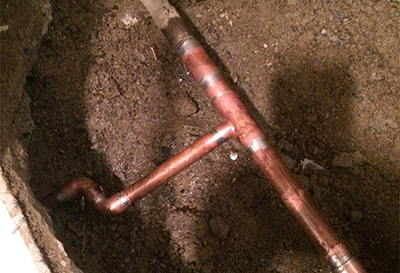How to Inspect If Your House Has a Surprise Leakage
How to Inspect If Your House Has a Surprise Leakage
Blog Article
We've stumbled upon this article pertaining to Finding hidden leaks down the page on the internet and think it made perfect sense to share it with you over here.

Early discovery of dripping water lines can mitigate a prospective calamity. Some small water leaks may not be visible.
1. Analyze the Water Meter
Every home has a water meter. Examining it is a guaranteed manner in which helps you uncover leakages. For starters, switch off all the water resources. Ensure nobody will purge, make use of the tap, shower, run the washing equipment or dishwasher. From there, most likely to the meter and watch if it will certainly alter. Given that no one is using it, there ought to be no motions. If it moves, that indicates a fast-moving leak. If you find no changes, wait a hr or 2 and inspect back again. This suggests you may have a slow leak that could even be below ground.
2. Examine Water Usage
Evaluate your water expenses and track your water usage. As the one paying it, you need to see if there are any inconsistencies. If you detect sudden changes, regardless of your usage coinciding, it indicates that you have leakages in your plumbing system. Remember, your water expense need to fall under the exact same variety each month. An unexpected spike in your costs suggests a fast-moving leakage.
Meanwhile, a consistent boost on a monthly basis, even with the same behaviors, reveals you have a slow-moving leakage that's also slowly intensifying. Call a plumber to extensively check your home, particularly if you really feel a warm location on your floor with piping below.
3. Do a Food Coloring Examination
30% comes from toilets when it comes to water usage. Test to see if they are running appropriately. Decline specks of food shade in the tank and wait 10 mins. If the shade in some way infiltrates your dish throughout that time without flushing, there's a leak between the container and bowl.
4. Asses Exterior Lines
Don't forget to examine your outdoor water lines also. Ought to water permeate out of the link, you have a loose rubber gasket. One little leak can throw away loads of water and surge your water bill.
5. Check and Evaluate the Situation
Homeowners must make it a routine to check under the sink counters as well as even inside cabinets for any bad odor or mold development. These 2 warnings show a leak so punctual interest is required. Doing regular assessments, also bi-annually, can save you from a major problem.
Examine for discolorations and also weakening as the majority of pipelines and devices have a life expectations. If you think leaking water lines in your plumbing system, don't wait for it to escalate.
Early discovery of leaking water lines can minimize a potential calamity. Some small water leaks may not be visible. Checking it is a guaranteed method that assists you find leaks. One tiny leak can lose bunches of water as well as spike your water costs.
If you presume leaking water lines in your plumbing system, don't wait for it to escalate.
WARNING SIGNS OF WATER LEAKAGE BEHIND THE WALL
PERSISTENT MUSTY ODORS
As water slowly drips from a leaky pipe inside the wall, flooring and sheetrock stay damp and develop an odor similar to wet cardboard. It generates a musty smell that can help you find hidden leaks.
MOLD IN UNUSUAL AREAS
Mold usually grows in wet areas like kitchens, baths and laundry rooms. If you spot the stuff on walls or baseboards in other rooms of the house, it’s a good indicator of undetected water leaks.
STAINS THAT GROW
When mold thrives around a leaky pipe, it sometimes takes hold on the inside surface of the affected wall. A growing stain on otherwise clean sheetrock is often your sign of a hidden plumbing problem.
PEELING OR BUBBLING WALLPAPER / PAINT
This clue is easy to miss in rooms that don’t get much use. When you see wallpaper separating along seams or paint bubbling or flaking off the wall, blame sheetrock that stays wet because of an undetected leak.
BUCKLED CEILINGS AND STAINED FLOORS
If ceilings or floors in bathrooms, kitchens or laundry areas develop structural problems, don’t rule out constant damp inside the walls. Wet sheetrock can affect adjacent framing, flooring and ceilings.
https://www.servicemasterbyzaba.com/blog/how-to-detect-water-leakage-in-walls/

Hopefully you enjoyed our section about Finding hidden leaks. Thank you so much for finding the time to read our article post. Appreciated our review? Please share it. Help somebody else check it out. Thanks for going through it.
Report this page